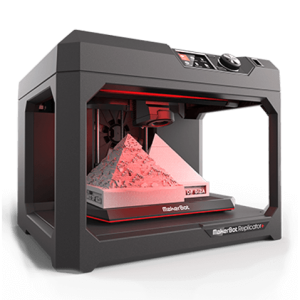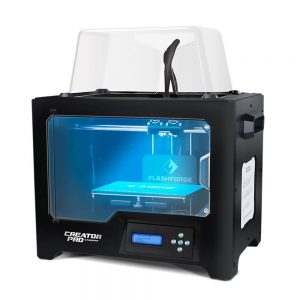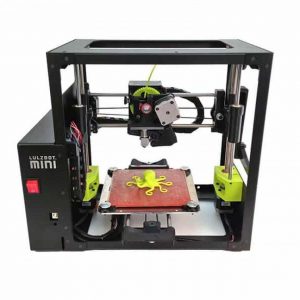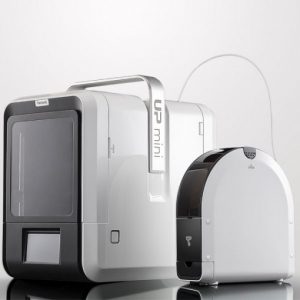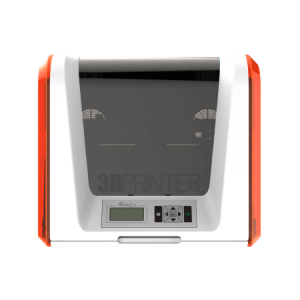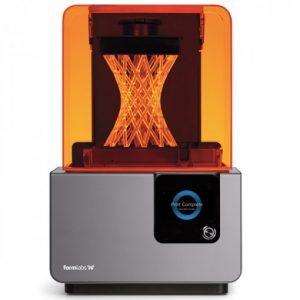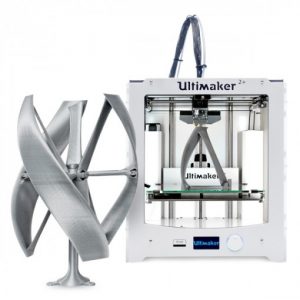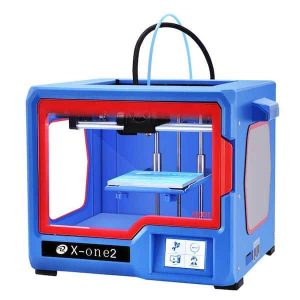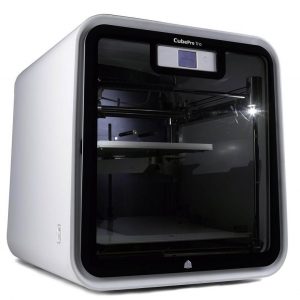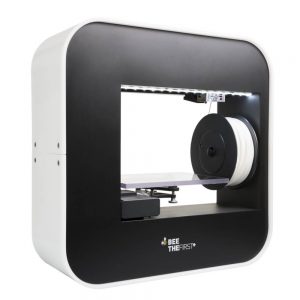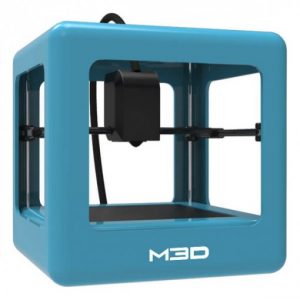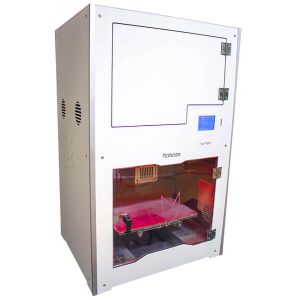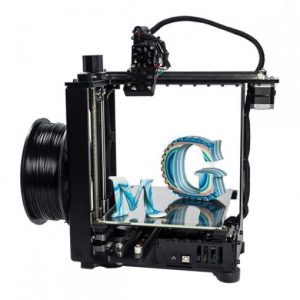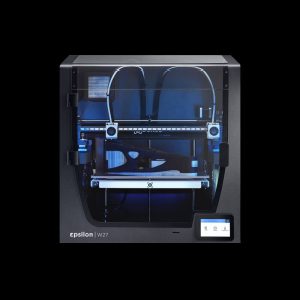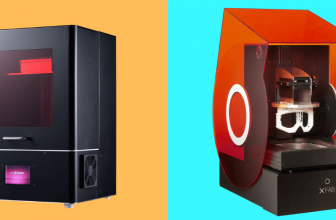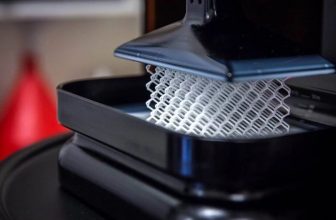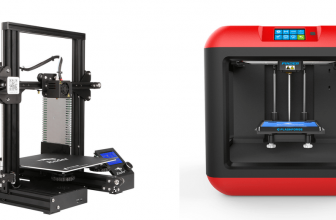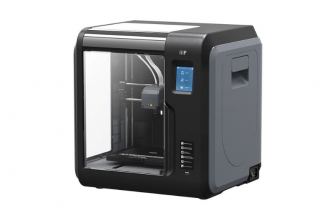Imagine a picture of a shoe turning into a physical functional object within a few minutes. It is not a scene from a science fiction movie. It is additive manufacturing (i.e. 3D Printing)!
Thanks to the development of 3D printing technology, you can create any three-dimensional object from a digital file. This was not possible with 2D printing. Initially, only industrialists or the elite class used 3D printers.
However, due to advancements in technology and its continuous growth, now small business owners and individuals can also easily afford this technology to create parts and functional prototypes.
Commercial Uses of 3D Printers
The increased use of 3D printers greatly benefited businesses and individuals. This technology reduces the production cost, saves time, improves productivity, and gives a competitive edge over others. It is used for various purposes:
Prototyping
Before producing a final product, the design teams build a model or sample to test and analyze an idea or a concept. This model or sample is known as a Prototype. You can identify functional errors and make improvements in the design process to ensure all customer requirements are being catered to.
The manufacturing of these prototypes remains costly and time-consuming before 3D printers. 3D printing made it feasible for companies to produce various complex prototypes of different sizes and shapes within a few hours.
Companies like BMW, Ford, and Airbus, etc. use 3D printers to produce prototypes of their cars and aerospace components.
Finished Products
Numerous companies are using 3D printers to produce assembly fixtures, tools, jigs, machine components, and consumer products with a smooth surface finish and fine details. It offers businesses flexibility, customization, and batch production.
General Electric uses a 3D printer to produce more than 85,000 fuel nozzles for the leap jet engine. Boeing, an airline company, manufactures military and commercial planes parts using 3D printers.
Sugar Lab prints edible icing and other sugary confections. Hershey’s partnered with 3D Systems to develop a 3D printer to produce various customizable chocolates and edible products.
Medical
Many surgeons, dentists, and doctors use 3D printing to save and improve the lives of their patients, including producing customized surgical tools and prosthetics, bioprinting, customizing synthetic organs and drugs, and creating prototypes of medical equipment and patient-specific organ’s replicas to test and practice on.
Architecture and Construction
3D printers allow architects to produce high-quality and complex models of their projects for better visualization of their ideas and concepts. They can easily pitch their ideas to their clients and customize them according to the customer’s specifications.
3D printing technology replaced traditional construction techniques. You can construct homes in a few hours without wasting raw materials. Recently, a Chinese construction company built 10 houses in a single day using giant 3D printers with robotic arms.
By using metals, plastics, and a variety of other materials, these printers enable construction companies to produce fixtures and various construction tools, for example, nuts and screws.
Education
3D printers are also making their way into classrooms. Exposure to this cutting-edge technology aids children in learning and prepares them for future challenges.
Lecturers use it to print prototypes of various tools, equipment, molecules, organs, cells, topography, animal structures, and artifacts, to facilitate their education.
Students can closely examine, inspect and analyze complex structures/processes physically and print out their artworks.
Top 15 Commercial 3D Printers 2025
There are hundreds of 3D printers available in the market for commercial use. If you want to buy one for your business, it is time-consuming and tiresome to screen out each 3D printer that caters to your needs, especially with no experience.
Thus, based on our extensive research, in this guide, we listed the 15 top 3D printers across the globe. The detailed overview of each printer will make it easier for you to choose one according to your printing goals and needs.
Comparison Chart
| Names | Links | Overall Rating |
|---|---|---|
| Original Prusa Mini | 8.4 | |
| MakerBot Replicator Plus | 7.8 | |
| FlashForge Creator Pro | 7.2 | |
| LulzBot Mini | 7 | |
| Tiertime UP mini 2 | 6.9 | |
| XYZprinting Da Vinci 1.0 | 7.1 | |
| Formlabs Form 2 | 7.3 | |
| Ultimaker 2 Plus | 8.9 | |
| QIDI Tech X-One2 | 8 | |
| CubePro Trio | 7.6 | |
| Beeverycreative Beethefirst | 7.9 | |
| M3D Micro | 8.2 | |
| Roboze One Plus 400 | 8.5 | |
| MakerGear M2 | 6.8 | |
| BCN3D Eplison W27 | 8.5 |
List of Best Commercial 3D Printers
Original Prusa Mini
|
The Original Prusa Mini is a compact FDM 3D printer with modern technology. It has a build volume of 180 x 180 x 180 mm and a layer height of 0.05 to 0.35 mm. The three-piece assembly is easy to set up.
It offers high print quality and a smooth surface finish. It can print complex designs precisely and accurately and costs around $349. Thus, it is worth the price.
Salient Features:
- Removable Magnetic Build Plate: Allows easy removal of completed 3D outputs
- Ethernet RJ45 port: Helps in streamlining the workflow
- Color LCD screen: Allows the user to preview the designs before printing
- Bowden System: The 3D printer has a Bowden System with a 3:1 drive gear ratio. This keeps the extruder lightweight, hence minimizing wobbling.
- Automatic Bed Leveling
- 32-Bit Controller: The printer is embedded with a customized 32-bit motherboard and uses the Trinamic 2209 drive.
- Affordable
- Large online support community
- Exceptional print results
- Compact
- Ease to set up
- Automatic bed leveling
- Limited print space
- Optional filament sensor upgrade
- No power recovery
MakerBot Replicator Plus
|
MakerBot Replicator Plus is a quiet 3D printer with many advanced features that give it an edge over other similar 3D printers.
It comes in a black sleek and sturdy body with a built volume of 16.2 x 17.4 x 20.8 inches and weighs around 18.3 kg.
It has an open frame that allows you to have a perfect view of the printing process with hollow top, front, and sides. Thus, it’s a good choice for learning institutes and small businesses.
The printer is expensive as compared to others and costs around $2,499. However, its features are worth the price.
It is easy to set up and only requires you to connect to a WI-FI connection and download an app that is user-friendly or connect the printer through a USB plug at the back of it. By creating an account with MakerBot, you can also view and print remotely.
The Replicator Plus uses the Fused Deposition Modeling (FDM) process for 3D printing. The filament is heated and deposited layer by layer on a pre-leveled print bed to 3D print.
The company offers great customer service and tries to solve all the queries quickly. Overall, this 3D printer is a great option for educational and professional uses.
Salient Features:
- Controls and User Interface: The control of the 3D printer is located at eye level at the front of the device. There are one push-button wheel and two more buttons to navigate the display. The user can also preview the design before printing on a desktop or cellphone.
- Filament Storage: The filament is stored externally at the back of the machine that allows the user to check the level of filament left for usage. It is easy and simple to load the filament. 0.9kg of MakerBot PLA (filament) costs between $48 and $65. You can choose between 30 different shades and finishes.
- Printing Speed: The company claims it is 30% faster than older models.
- Extruder: You can purchase a smart extruder with the printer. It detects the low level of filament while 3D printing and notifies you to refill it to start the printing again.
- Print Quality: The 3D print is of decent quality with fine details. You can print the straight lines with perfection. It is good for printing sculptures and complex geometric patterns.
- Sleek design
- Easy to set up with a mobile app
- Wi-Fi connectivity
- Remote monitoring possible
- 30% faster print speed
- 25% larger build volume
- Print quality does not justify the printer price
- USB port has connectivity issues
- Warping caused due to non-heated build plate
- Cannot use third party filament
- Risky to use around children due to an open frame
FlashForge Creator Pro
|
FlashForge is one of the largest and reliable manufacturers of 3D printers in China. They launched Creator Pro that is budget-friendly with various advanced features.
It has a large build volume of 227 x 148 x 150 mm and weighs less than 19 kg.
The layer resolution varies between 100 and 500 microns and the speed is 100 mm/s. It can reach temperatures of up to 260o Celsius.
The printer costs around $699 and has a universal power supply. The maintenance cost is also low. In short, it’s a nice option for limited-budget individuals and businesses.
Salient Features:
- Dual Extruders: They are unique and versatile and use two aligned print heads.
- Supports Multi Materials: Thanks to the two nozzles, you can print with two different materials, and the machine supports PVA
- Enclosed Design: The printer has a unique design. It has doors that are both closable and removable. When the doors are closed, you can print with hard filaments like ABS, maintaining the chamber temperature and preventing wrapping. With open doors, the air can circulate and you can print with materials like PLA.
- Heated Print Bed: It is 6.3 mm thick and made of an aluminum alloy. The heated bed improves print quality and provides thermal conductivity.
- Metal Leveling System: There is a three-point metal leveling system. It offers freedom for adjustments and enhancing accuracy.
- Sturdy Design: The machine’s frame is made of metal that provides printing stability. The metal frame allows manufacturers to increase printer speed by almost 60% as compared to those with a plastic body.
- Pre-assembled: The machine requires user no assembling, thus saving the setup time.
- Pre-assembled
- Good print quality
- Dual extruder
- Budget-friendly
- Heated print bed
- Manual calibration
- Slightly noisy
LulzBot Mini
|
LulzBot Mini is an open-source FDM printer with advanced features, comprising of a black powdered metal frame with 152 x 152 x 158 mm print volume size and a maximum speed of 275 mm/s.
The layer height can vary between 0.05 and 0.50 mm. It has one extruder and can only use one filament at a time.
The printer costs $1,250. It is easy to set up. The company offers a one-year warranty along with email and phone support. It is a wonderful 3D printer, especially for beginners.
Salient Features:
- Automatic Bed Leveling: Eliminates errors of leveling and improves print accuracy
- Automatic Nozzle Cleaning: Frees you from cleaning the nozzle to avoid print failures due to jammed nozzle.
- All Metal Hexagon Hot End: All Metal Hexagon Hot End extruder delivers stable temperature for 3D printing. The printer is also inbuilt with an active cooling system that restricts the heat to where it is needed for greater accuracy
- PEI Print Surface: The printer embeds a dependable bed adhesion that keeps the print intact
- Compatible with a Variety of Filaments: The printer can print with ABS, PLA, PVA, WOOD, HIPS, Polyester, Nylon, PETT, Polycarbonate, bronze, copper, and many other filaments
- Connectivity to PC: The printer should always be connected to PC for operation, as there are no external controls
- Third-Party Filaments: User can use any third party filament
- Open Frame: The printer is open from all sides, thus allowing visibility of the printing process
- User friendly
- Sturdy design
- Automatic calibration
- Auto-cleaning nozzle
- Thorough documentation
- Reliable
- Open-source hardware
- No LCD control
- Small build volume
- A PC required for connectivity
- Noisy
Tiertime UP mini 2
|
Tiertime UP mini 2 is a budget-friendly FDM Desktop printer from Tiertime, a Chinese manufacturer. It is a compact and easy-to-use machine with a print space of 120 x 120 x 120 mm.
It costs less than $600 and is easy to set up. It uses FDM Technology for 3D printing and is beginner-friendly.
Salient Features:
- Fully Assembled: The 3D printer comes fully assembled, which makes it easier for users to handle it after unboxing
- Enclosed Chamber: The printer has a closed frame that allows printing with ABS and managing consistent print temperature within the chamber. Thus, it is safe to use.
- Heated Print Bed: It improves bed adhesion and minimizes warping.
- HEPA Filter: Allows filtering of 90% harmful fumes from ABS making the workplace safer for users. The printer can also be used in less ventilated areas.
- Material Detection: The printer automatically detects the material.
- Separate Filament Caddy: Unlike a filament spool holder, it holds the material for longer and keeps it safe from moisture. It can hold 500 gms of filament.
- Automatic Bed Leveling
- Quiet Operation
- Power Outage Recovery: The printer pauses the printing process if there is a power outage. It then resumes printing when the power comes up.
- Removable Print Bed: You can easily get the 3D printed object after removing the bed from the printer.
- Wi-Fi and USB Connectivity
- Multi Material Support: It can print with ABS, PLA, and its composite filaments. You can also use third-party filament.
- Highly compact printer
- Automatic bed leveling
- Filament detection
- Enclosed Frame Design
- Cheap
- Reliable
- 1-year warranty
- Smaller print space
- No SD card
- Limited size filament caddy
XYZprinting Da Vinci Jr. 1.0
|
Da Vinci Jr. 1.0 by XYZprinting is an affordable and user-friendly 3D printer. It has a trendy frame with 150 x 150 x 150 mm print space. It weighs 12 kg and is easy to carry.
The layer resolution varies from 100 to 400 microns. The printer speed is a maximum of 120 mm/sec. You also get an SD card and USB connectivity options.
The printer is available for $349. It is a good option for beginners and hobbyists.
Salient Features:
- Plug and Play Design: The user can unpack it and start printing without the hassle of assembling it.
- Enclosed Frame: It is safe to use due to the enclosed chamber.
- Auto Calibration
- Easy Release Extruder: It is easy to take out the extruder with one click and clean it, making maintenance easy
- User Interface Controls: There are scroll buttons on the printer that allows you to change the settings as per requirement.
- Proprietary Material Only: It uses filaments by XYZprinting only. However, they are affordable.
- Limited Material Support: The 3D printer is compatible with PLA, tough PLA, and PETG only.
- See Through Door: It allows you to keep track of the printing process.
- Ease to use
- Enclosed chamber
- Auto calibration
- Auto filament feeding
- Affordable
- Portable
- Low print quality
- Non-heated print bed
- Non-removable print bed
- Slow proprietary software
Formlabs Form 2
|
Form 2 by Formlabs is an economical, reliable, and most popular SLA 3D printer. It has numerous in-built features for high-resolution and consistent quality printing.
It has great capabilities to print complex designs in small batches with a build volume of 145 x 145 x 175 mm and weighs around 13 kg.
There are three connectivity options available, i.e. USB Port, WI-FI connection, and Ethernet. It is compatible with Windows 7, Mac OS, and later versions as well.
The printing resolution is 25 microns. There is an auto heating technology for great 3D printing.
The printer is designed for professional use and costs around $3,499. It is commonly used for producing dentures, jewelry, and prototypes. The company provides a 1-year warranty.
Salient Features:
- Hassle-Free 3D Printing: Once you upload a 3D file to the printer, it allows the user to disconnect the PC or Wi-Fi while it is printing.
- PreForm Software: It allows the positioning of the model to avoid errors and enhance print accuracy.
- Layout Tools: The layout tools allow you to resize, import, align and duplicate the digital 3D design.
- Smart Support Structure: It supports the construction of the parts while printing to get clean prints.
- Printing Status: The touchscreen display in the front allows you to stay tuned to the printing status. It also helps in setting other parameters, for example, Wi-Fi.
- Excellent print quality
- Easy setup
- Great combination of hardware and software
- Great slicer software
- Good user interface
- Noise-free printing
- Post-processing is required
- Slow speed as compared to FDM printers
- Changing resins is messy and hard
- Enquire consumables costs
Ultimaker 2 Plus
|
Ultimaker 2 Plus is an advanced version of the Ultimaker 2 by Ultimaker, a Netherlands-based company. This printer delivers accurate results and is reliable. It caters to a broad range of user’s needs.
The machine is based on the Fused Filament Fabrication (FFF) process and has a build volume of 8.8 x 8.8 x 8.1 inches. It has an acrylic frame with partial enclosures.
The printing resolution ranges from 600 microns to 20 microns. It allows you to use the third-party filament spool to reduce the operation cost.
The printer is priced at around $2,500. You can use Cura 3D printing software, the in-house software of Ultimaker, which is user-friendly.
The company offers great customer support (onsite installation, online community, etc.). Thus, it is a great option with the optimal 3D printing quality.
Salient Features:
- Ease to Set Up: It is simple and easy to set up by loading the filament spool holder, fixing the build plate, plugging the printer into the power supply, and turning it on.
- Geared Feeder: The geared feeder allows users to swap the filament simply and easily and control the filament’s pressure. It makes the machine reliable.
- Swappable Nozzles: The printer comes with an Olsson Block Kit that contains four different diameter nozzles (0.25, 0.4, 0.6, 0.8 mm). These swappable nozzles allow users to print with the highest precision and control the speed.
- Only SD Card Support: A 4GB SD card provided by the company helps you transfer the digital 3D designs to the printer for 3D printing.
- Manual Calibration: The user should learn manual calibration to achieve the best results.
- Heated Build Plate: The heated glass plate enhances printing quality, avoids wrapping, and improves the bonding strength of the bottom layer.
- Low printing noise
- High resolution and accuracy
- Can use third party filament
- Interchangeable extruders
- Compatible with various OS: OS X, Windows, and Linux
- Easy to set up
- Manual calibration
- Expensive
- The partial enclosure allows prints to get affected by environmental changes
- No Wi-Fi or USB port connection
QIDI Tech X-One2
|
X-One 2 is the advanced version of X-One. The printer costs around $298, offering long-term value and attracting various hobbyists and small businesses.
The 3D printer has a build volume of 145 x 145 x 145 mm and comes with open-source software. It is compatible with Qidi Print, Cura, and Simplify3D. You can use third-party filament.
It allows you to print with TPU, Nylon, PETG, PLA, and ABS.
Thus, it is a 3D printer to fall in love with due to its low cost and ease to use.
Salient Features:
- Touchscreen Display: A 3.5-inch touchscreen monitors the bed temperature and printing progress. It allows you to save your work, pause it and resume it later.
- Removable Covers: These covers act as a shield against dust and other particles and maintain internal temperature. It is safe to use with kids around.
- Plug and Play Device
- Heated Printing Bed: The printing bed is made of an aluminum alloy and is layered with PEI. It allows printing with ABS and PETG.
- Multiple Connectivity Options: You can connect X-One 2 using either a USB port or an SD card slot.
- Excellent customer service
- Well-built metal frame
- Easy to set up
- Superior print quality
- Limited build size
- Adhesion issues
- Documentation of the printer is confusing
- The filament is difficult to load
CubePro Trio
|
CubePro Trio is a semi-professional 3D printer by 3D Systems, a company founded in 1986. It comes with a compact structure and slim design that makes it feasible for home and small offices use.
It offers a ready-to-print feature and is based on FDM print technology.
The printer has a build volume of 20.04 x 23 x 27.04 cm and weighs up to 44 kg. The print resolution varies from 70 to 200 microns.
It has a maximum of 15 mm/s print speed. However, that varies according to material, design, etc.
The printer is costly and its price varies from $2,799 to $4,399. The cartridges used to cost around $99 each.
Salient Features:
- Controlled Climate Chamber: You can print with precise details and accuracy
- Automated Setting: The printer offers a stabilized and automated printing mechanism that makes it easy to operate.
- Easy Cartridges Feed: It is easy to reload cartridges that last longer.
- Triple Material and Triple Colors: The three extruders in the printer allow you to use three materials and colors. Thus, it gives the freedom to mix and match various materials.
- Large Build Platform: The printer offers large print space along with higher print resolution.
- Proprietary Filaments: These filaments give you better quality 3D print as compared to standard filaments.
- Smart Cartridge: This technology keeps the cartridges safe for 12 months. Thus, the printer is a good option if you want to print infrequently.
- Two CubePro Print Pads: The company provides two print pads with the printer so that if one is damaged, you can use the other one without waiting to buy one.
- CubePro Glue Stick: The Company also provides a Glue Stick to enhance the adhesion of the print bed by directly applying it to the pad.
- Heated Build Chamber: Maintains the temperature while printing and prevents wrapping
- Wi-Fi Connectivity: The printer offers both wired and wireless connectivity. It is also compatible with iSense 3D Scanner.
- Large print space
- Easy to use
- Supports a wide range of filaments
- Features both wired and wireless connectivity
- High printing speed
- Expensive
- Supports only propriety filaments
BeeVeryCreative BeeTheFirst
|
BeeTheFirst is the first printer launched by BeeVeryCreative, a Portugal company that used to manufacture low-cost microcontrollers.
It is an FDM machine, having a sleek box frame with rounded edges. It offers exceptional print quality and ease of use and setup.
The printer has a small build volume size of 190 x 135 x 125 mm. It offers 50, 100, 200, and 30-micron resolution to print with various finishes and uses only USB connectivity.
It costs around $1500. The company provides excellent customer service.
In short, it is a great option for users with limited use.
Salient Features:
- Portable: The printer weighs only 9.5 kg with a compact structure and a handle on top, which provides an ease to transfer from one place to another. It’s a real desktop printer.
- Easy Filament Management: It is easy to change and load the filament.
- Removable Print Bed: The machine has magnetic holders for its print bed, which allows easy removal of the bed when printing is completed.
- Reliable: It is known internationally for its reliability.
- Power Saving: The printer switches to power saving mode when it’s not operating. Thus, it helps you save energy and is environmentally friendly.
- Powerful Extruder: The extruder can work with various filaments, delivering finer complex details, and is efficient and accurate.
- Advanced Shutdown: It keeps the machine protected and safe whenever a power failure occurs.
- Easy to install
- Trendy and sleek
- High print resolution and accuracy
- Compatible with Windows, Mac, and Linux OS
- Costly
- Occasional software crashes
M3D Micro
|
The M3D Micro is great for educational purposes. It is cheap and reliable with higher print quality and is available in five colors (blue, green, red, grey, and black).
It is compact with advanced features, has a small build volume of 4.2 x 4.6 x 4.4 inches, and weighs around 1 kg. The printer costs around $349. Thus, it is suitable for home and school use.
Salient Features:
- Plug and play: M3D micro is completely assembled by the company to make it convenient for beginners to start printing immediately after unboxing.
- Easy software: The software is beginner-friendly and can be downloaded from the company’s website.
- Quiet Operation
- Removable Print Bed
- Adjustable Resolution: You can set the resolution between 50 microns and 350 microns
- Only offers USB connectivity
- Above-average print quality
- Multi-Material Support
- High accuracy
- Best for small businesses and projects
- Highly affordable
- Easy to operate
- Quiet operation
- Not for large businesses or projects
- Slow speed with high resolution
- Lack of on board memory
Roboze One Plus 400
|
Roboze One Plus 400 is an FDM machine with numerous industrial-grade materials. It has a large print space of 300 x 200 x 200 mm and comes fully assembled from the company.
It can print with various filaments. The minimum print resolution is 50 microns.
The Printer is priced at $50,000. It is built for professional use and is mostly used in the aerospace, automobile, and plastic industry.
Salient Features:
- High-Temperature Extruder: It can reach up to 450o Celsius that allows printing with high resistance materials, such as PEEK, PEI etc.
- Enclosed Frame: The enclosed chamber with see-through doors allows you to maintain constant temperature and visibility of the printing process.
- Heated Bed: The bed can heat up to 150 o Celsius. Thus, you can print with Nylon and other hard filaments.
- Multi-Material Support: The printer can print with six technical materials (PEEK, CARBON PA, ABS-ESD, ULTRA-PLA, STRONG ABS, and FUNCTIONAL NYLON).
- Large Print Volume
- 5-Inch Colored Touchscreen: The interface is user-friendly
- Vacuum Plate System: This technology allows the first layer to adhere firmly to the bed despite the size of the model, offering higher print stability
- Beltless System: Allows ease of movement along X AND Y axes for higher accuracy
- C7 Ball Screw Component: It is a component of the Z-axis for higher accuracy and provides durability and wear resistance.
- Advanced Air Cooling System
- Dual Extruder
- Large print space
- Heated print bed
- High print speed
- Compatible with multiple filaments
- Costly
- Not ideal for home use
MakerGear M2
|
US-based MakerGear manufactures this printer. It is one of the most common home-used printers. It has a build volume of 200 x 250 x 200 mm. The layer resolution is 50 microns that create accurate and precise results.
It is compatible with Windows, MAC, and Linux OS. The Company offers both a fully assembled package of $1825 and a kit version of $1550.
Salient Features:
- Sturdy Metal Frame: The aluminum frame provides strength to the machine to keep working for hours and helps in achieving accurate and precise prints.
- Fully Assembled Machine: The Company offers both fully assembled packages and low-priced kit versions. The user can choose either convenience or low cost.
- Extruder: The printer embeds a single extruder that heats up to 300o Celsius.
- Multi Filament Support: The 3D printer supports various filaments (PLA, ABS, Nylon, etc.)
- Borosilicate Glass Bed: The build plate is made of Borosilicate Glass. It has a laminated print surface that you can replace for better adhesion.
- Compact Structure
- Open Frame: It allows you to keep track of the printing process.
- Four Bed Leveling System
- 0.35 Brass Nozzle
- Heated Bed
- LCD Screen: It allows the user to control the settings directly. It works best with an SD card reader attached to the printer.
- Open Source Design
- Reliable
- Upgradable
- High precision
- Fast speed
- Heated bed
- Expensive
- Manual bed leveling
- Limited Print space
BCN3D Epsilon W27
|
Epsilon W27 uses Fused Filament Fabrication (FFF) technology for 3D printing. It allows printing using five different modes (i.e. single, duplicate, micro, soluble support, and multi-material).
It also supports batch production. The print space is 420 x 300 x 220 mm. The touchscreen interface displays information in Spanish, English, German, France, and many other languages.
The 3D printer supports PLA, PET-G, TPU 98A, PVA, ABS, PP, PA, PP GF30, and PAHT CF15. It is priced at $6793.
Salient Features:
- Independent Dual Extrusions: It decreases batch production time, prints identical models at one time, prints mirror designs, and creates complex geometrical models.
- Humidity-Controlled Environment: The 3D printer is made of Silica gel that absorbs moisture to increase the life of materials.
- Complete Workstation: There is an extra space to keep your laptop or tablet for a full workstation.
- Print While in Storage and during Power Failure: You can load a dehumidifier that has a capacity of eight or four spools. It allows users to print while keeping the material in its ideal condition. In addition, in case of a power failure, the printer continues to print for extra 2 minutes.
- Enclosed Chamber: It helps to control internal print temperature. There are two filters (HEPA and Carbon). They protect the working environment from harmful fumes and particles.
- Multilingual 5-inch Touchscreen: It allows users to monitor the 3D Printer in seven languages.
- Heated Bed and Hotends: The Epsilon W27 has hot ends that deliver smooth and reliable extrusions. The bed can heat up to 120o Celsius and prevent warping.
- BCN3D Cloud: It allows easy transfer of digital files and ensures automatic up-gradation.
- Large build volume
- High-quality prints
- Excellent print speed
- Batch production possible
- Difficult post-processing
- Difficult maintenance
Buyer’s Guide
The demand for 3D printing for commercial purposes is increasing these days, as it is cost-effective and time-saving.
However, choosing one commercial 3D printer for your business can be tricky as there are numerous types of 3D printers available in the market. You should consider the following factors before making a purchase decision:
Do You Need A 3D Printer?
It is essential to consider your 3D printing needs before making a final decision. If you need to 3D print rarely and are adding no value to your business, you do not need a 3D printer.
If you are an enthusiast or hobbyist and want to try the new technology, it would be better for you to first check out reviews online or talk with an experienced user to find out if a particular 3D printer is a right option for you or not.
- 3D Printing Technology: There are 11 types of 3D printing technologies available in the market. You should first find out what you want to produce and review each technology to figure out which one will be most feasible for the business. FDM, FFF, SLA, DLP, And MSLA are the most commonly used in small-scale businesses.
- Build Volume: The size of your company and the size of the object you want to produce will determine the build volume you require. For the build volume of the printer, you need to consider the inner dimensions (height, width, and length). For a larger venture, you will require large print space. However, if you have a small business or are a beginner, a small 3D printer will work for you.
- Print Material: Different 3D printers use different materials to print. Some use plastic, other use resins. The type of model you need to produce can determine the type of 3D printer that you need, as it should use the same material. It is ideal to buy a printer that uses a wide range of materials and colors.
- Print Quality: It is one of the most important factors to consider. Printers with high resolutions, a heated print bed, and an enclosed chamber help you to produce models with fine details and a smooth surface finish. If you want a 3D printer for educational or experimental purposes, the print quality matters the least.
- Safety: Safety matters the most when working around children. The 3D printer should be safe to use. Some large 3D printers emit toxic particles and fumes that could be harmful to you as well as the environment. Continuous exposure to the fumes could prove hazardous. You should choose a printer that is safe to use, especially when you are a beginner or are working around children.
- Price and Operational Cost of the 3D Printer: If you are on a limited budget, it is important to consider the price, operational, and maintenance cost of the printer as these add up to a significant expense for you.
- Customer Service Support: How to assemble the printer? Whom to contact if the machine breaks down? Is there any insurance that the company offers with the 3D printer? Companies have specialized teams especially assigned to assist customers when making a purchase decision and also, post-purchase. Some have large online communities to answer clients’ queries.
Frequently Asked Questions (FAQs)
How Much Does A Commercial 3D Printer Cost?
A good commercial 3D printer usually costs between $300 and $5000 depending on the features.
What Can You Produce With A 3D Printer?
A 3D printer can print unimaginable designs. They can produce small objects, such as a nut, and large objects, like a building model.
What 3D Software Is Suitable For Beginners?
If you are a beginner, you can use software that is user-friendly and free to download. Google SketchUp, 3Dtin, OpenSCAD, Blender, and Tinkercad are a few options available. They are fun and easy to use.
What Is An ‘Open Source’ 3D Printer?
Open-source 3D printers allow you to print with any suitable material from any source. This means you can use third-party materials too. It allows you to minimize operating costs.
What Is The Purpose Of Two Extruders?
Two extruders allow you to print with two different materials and colors to get great print results.
Do You Require Special Training To Use 3D Printers?
Users need to familiarize themselves with the printer and the process of 3D printing. Manufacturers provide user guides when you buy a 3D printer, which is helpful. For further assistance, you can check out the manufacturer’s website.
Conclusion
The market for 3D printers is expanding exponentially. There are thousands of 3D printers available for commercial use. Each of them offers certain pros and cons. Companies are trying to make these printers user-friendly, eco-friendly, and affordable.
In order to purchase a commercial 3D printer, you should consider its connectivity, raw material control, color, user interface, build plate, print space, extruders, print quality, speed, printer capabilities, and practicalities, and, most importantly, the cost of the printer.




